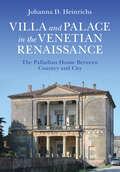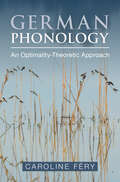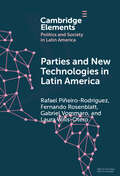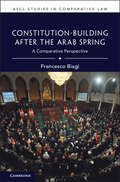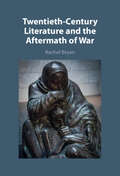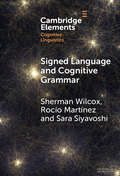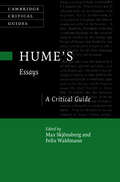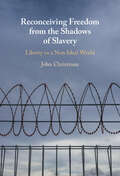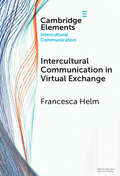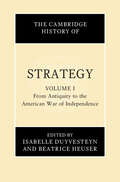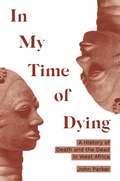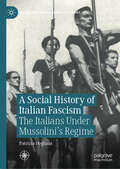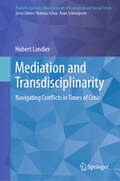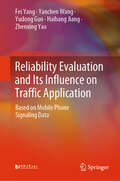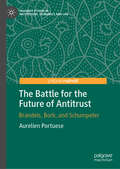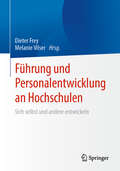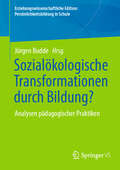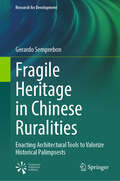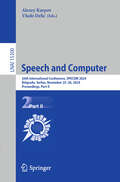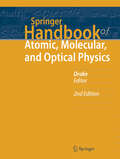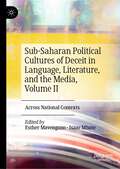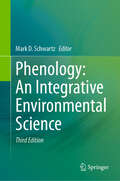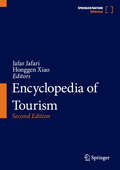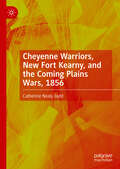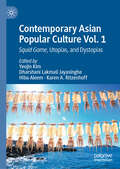- Table View
- List View
Villa and Palace in the Venetian Renaissance: The Palladian House Between Country and City
by Johanna D. HeinrichsDesigned by Andrea Palladio, the Villa Pisani at Montagnana was the country residence of a Venetian nobleman, Francesco Pisani. Unusually, its design combines features of both villa and palace architecture, and it challenges the conventional view of a villa as subsidiary to the urban palace, the true seat of an elite family. In this book, Johanna D. Heinrichs offers the first comprehensive study of the Villa Pisani, providing a critical analysis of Palladio's hybrid design, the villa's original setting and uses, and the preoccupations of its patron. Heinrichs argues that the Villa Pisani served as the owner's principal residence. She also shows how a microhistorical approach can provide new insights about a familiar Renaissance building type and about the theory and practice of a canonical architect. Based on scrutiny of original documents and visual sources, Heinrichs's study is supported by a rich illustration program composed of photographs, plans, maps, and digital reconstructions.
German Phonology: An Optimality-Theoretic Approach
by Caroline FéryDrawing on an optimality-theoretic framework, this book provides a comprehensive overview of the phonology of German, with its idiosyncratic array of sound patterns. It starts with the consonants and vowels and the distinctive features they consist of, moving on to account for allophonic changes in detail, as well as syllables and their weight units. Phonological processes are then explored in depth, with chapter-length explorations of feet, prosodic words, prosodic phrases, and intonation phrases, showing that the prosodic hierarchy provides the domains of most phonological processes. It also includes discussions of the interfaces of morphology and syntax with phonology, as well as prosodic phrasing and intonation. The constraint-based approach allows a new holistic perspective, simultaneously encompassing all aspects of German phonology. Wide-ranging yet accessible, it is essential reading for advanced students of both linguistics and German, as well as individual scholars seeking a one-stop resource on the topic.
Parties and New Technologies in Latin America (Elements in Politics and Society in Latin America)
by Gabriel Vommaro Rafael Piñeiro-Rodríguez Fernando Rosenblatt Laura Wills-OteroThis Element analyzes the incorporation of new information and communication technologies (ICTs) by different parties in Latin America to organize volunteers and mobilize supporters during elections. It assesses ICT-related changes in how parties recruit prospective candidates, collect information about citizens' preferences, and mobilize for elections and how these changes have reduced the power of the rank and file within party organizations. Party leaders have an incentive to incorporate new ICTs to increase electoral efficacy and reduce the role of rank-and-file members in performing essential party functions. However, the result of the incorporation of technology depends on leaders' capacity to control the process within the party. Based on case studies of ICT incorporation by various Latin American parties and electoral campaigns, the authors posit that the incorporation of technology will consolidate a power dynamic that predates the adoption of ICTs to fulfill organizational functions.
Constitution-Building After the Arab Spring: A Comparative Perspective (ASCL Studies in Comparative Law)
by Francesco BiagiHow were post-Arab Spring constitutions drafted? What are the most significant elements of continuity and change within the new constitutional texts? What purposes are these texts designed to serve? To what extent have constitutional provisions been enforced? Have the principles of constitutionalism been strengthened compared to the past? These are some of the key questions Francesco Biagi addresses. Constitution Building After the Arab Spring. A Comparative Perspective examines seven national experiences of constitution building in the Arab world following the 2011 uprisings, namely those of Morocco, Algeria, Tunisia, Libya, Egypt, Syria, and Jordan. This interdisciplinary book, based largely on the author's own work and research in the region, compares these seven national experiences through four analytical frameworks: constitution-drafting and constitutional reform processes; separation of powers and forms of government; constitutional justice; and religion, women and non-Muslims within the framework of citizenship.
Twentieth-Century Literature and the Aftermath of War
by Rachel BryanStudents of twentieth-century literature are familiar with narratives that associate devastating wars with conceptual, societal, and aesthetic upheavals. What these accounts overlook, however, is a body of psychologically attuned modern writing that was less interested in this shattering of faith and form than in those counterfactual modes of resistance deployed by individuals and nations in response to mass violence and profound change. Twentieth-Century Literature and the Aftermath of War is an innovative study of the attention paid to such reparative, stabilising impulses in post-war writings from across the last century. Focusing on works by Henry James, Elizabeth Bowen, and Kazuo Ishiguro as case studies, it argues that to fully understand the relationship between modern warfare and literary art, we must learn to engage with texts whose modernity lies in their acknowledgement of the draw felt towards, and contested ethics of, consolatory counterfactuals.
Signed Language and Cognitive Grammar (Elements in Cognitive Linguistics)
by Sherman Wilcox Rocío Martínez Sara SiyavoshiThis Elements monograph presents a Cognitive Grammar (CG) approach to a range of signed language grammatical phenomena. It begins with a background on the history of sign linguistics, focusing on what was a widely-held belief that signs are simply gestures. The first section traces the modern linguistic examination of signed languages, focusing on Stokoe and his demonstration that these languages exhibit phonology and duality of patterning. Next, we present some fundamental principles that are foundational for cognitive linguistics and sign linguistics. In a section on Cognitive Grammar, we present a brief overview of CG principles, constructs, and models. Section 4 presents extensive analyses of signed language constructions applying CG, including nominal grounding; the concepts of Place and placing; a CG approach to 'agreement' constructions in signed languages; reported dialogue; grammatical modality; and the grammatical meaning of facial displays. A final section examines the controversial role of gesture in grammatical constructions.
Hume's Essays: A Critical Guide (Cambridge Critical Guides)
by Max Skjönsberg Felix WaldmannDavid Hume's Essays, which were written and published at various junctures between 1741 and his death in 1776, offer his most accessible and often most profound statements on a range of subjects including politics, philosophy, aesthetics, and political economy. In Hume's lifetime, the readable and wide-ranging Essays acquired considerable fame throughout Europe and North America, influencing the writings of such diverse figures as James Madison and William Paley, yet they have not been given the same scholarly attention as his more famous philosophical works. This Critical Guide provides a series of in-depth studies of the Essays, as well as an account of the state of scholarship on the work. Thirteen chapters examine the Essays from historical, political and philosophical perspectives, with the aim of restoring the work to its rightful place among Hume's works and in intellectual history more broadly.
Reconceiving Freedom from the Shadows of Slavery: Liberty in a Nonideal World
by John ChristmanIn a departure from standard approaches to the concept of liberty, in this book John Christman locates and defends the concept of freedom as a fundamental social value that arose out of fights against slavery and oppression. Seen in this light, liberty must be understood as requiring more than mere non-interference or non-domination – it requires the capacity for self-government and the capabilities needed to pursue valued activities, practices, and ways of life. Christman analyses the emergence of freedom as a concept through nineteenth- and twentieth-century struggles against slavery and other oppressive social forms, and argues that a specifically positive conception best reflects its origins and is philosophically defensible in its own right. What results is a model of freedom that captures its fundamental value both as central to the theoretical architecture of constitutional democracies and as an aspiration for those striving for liberation.
Intercultural Communication in Virtual Exchange (Elements in Intercultural Communication)
by Francesca HelmVirtual exchange is an educational approach that uses technology to bring together people from geographically and/or culturally distant locations in sustained online interactions, often intended to develop their intercultural awareness and understanding. Though the practice has existed for several decades, it has gained popularity in recent years, in part due to the recent Covid-19 pandemic and recourse to online tools for international and intercultural learning. This Element explores intercultural communication in virtual exchange by looking at how and why culture is made relevant in the pedagogical design and framing of virtual exchanges and what impact this might have on student positioning, power dynamics, and on intercultural learning. From this framework three broad approaches are outlined, which are defined as comparative, challenge-based, and dialogue-based. Each approach is explored through examples and the opportunities, limitations, and risks for intercultural learning.
The Cambridge History of Strategy: Volume 1, From Antiquity to the American War of Independence (The Cambridge History of Strategy)
by Beatrice Heuser Isabelle DuyvesteynVolume I of The Cambridge History of Strategy offers a history of the practice of strategy from the beginning of recorded history, to the late eighteenth century, from all parts of the world. Drawing on material evidence covering two and a half millennia, an international team of leading scholars in each subject examines how strategy was formulated and applied and with what tools, from ancient Greece and China to the Ottoman and Mughal Empires and the American Revolutionary War. They explore key themes from decision-makers and strategy-making processes, causes of wars and war aims and tools of strategy in war and peace, to configurations of armed forces and distinctive and shared ways of war across civilisations and periods. A comparative conclusion examines how the linking of political goals with military means took place in different parts of the world over the course of history, asking whether strategic practice has universal features.
In My Time of Dying: A History of Death and the Dead in West Africa
by John ParkerAn in-depth look at how mortuary cultures and issues of death and the dead in Africa have developed over four centuriesIn My Time of Dying is the first detailed history of death and the dead in Africa south of the Sahara. Focusing on a region that is now present-day Ghana, John Parker explores mortuary cultures and the relationship between the living and the dead over a four-hundred-year period spanning the seventeenth to twentieth centuries. Parker considers many questions from the African historical perspective, including why people die and where they go after death, how the dead are buried and mourned to ensure they continue to work for the benefit of the living, and how perceptions and experiences of death and the ends of life have changed over time.From exuberant funeral celebrations encountered by seventeenth-century observers to the brilliantly conceived designer coffins of the late twentieth century, Parker shows that the peoples of Ghana have developed one of the world’s most vibrant cultures of death. He explores the unfolding background of that culture through a diverse range of issues, such as the symbolic power of mortal remains and the dominion of hallowed ancestors, as well as the problem of bad deaths, vile bodies, and vengeful ghosts. Parker reconstructs a vast timeline of death and the dead, from the era of the slave trade to the coming of Christianity and colonial rule to the rise of the modern postcolonial nation.With an array of written and oral sources, In My Time of Dying richly adds to an understanding of how the dead continue to weigh on the shoulders of the living.
A Social History of Italian Fascism: The Italians Under Mussolini’s Regime (Italian and Italian American Studies)
by Patrizia DoglianiThis book uncovers how fascism reshaped Italian society according to its ideological and historical interpretation of the Italian nation and people and identifies the strengths of this transformation, but also the resistance encountered from, for example, women and minority groups, to accept it in everyday life. It analyzes the success achieved by some policies aimed at popular masses in order to integrate them into the nation, and how fascism initiated an early welfare state project to address specific categories of society such as veterans, families, mothers and children. The book also questions the concept and practices of social citizenship reserved only for those who gave evidence of formal adherence to fascism.
Mediation and Transdisciplinarity: Navigating Conflicts in Times of Crisis (Transdisciplinary Management of Ecological and Social Crises)
by Hubert LandierThe world is in crisis at every level: the planet, humanity, and all kinds of human communities, including working communities. The result is likely to be violence and chaos. And yet, man lives and can only live with others. Relationships in all their forms therefore need to be developed with a view to building a common future. However, when this in-between has been broken, when it is no longer possible to get along, when violence threatens or develops in a sometimes dramatic way, it may be necessary for both sides to call on an external third party. This book is based on decades of professional experience in the practice of corporate mediation. It examines the crucial role of mediators in resolving conflicts and fostering understanding in various contexts. By exploring real-life case studies and theoretical frameworks, the book offers valuable insights into how mediation can be a powerful tool for creating a harmonious and sustainable future.
Reliability Evaluation and Its Influence on Traffic Application: Based on Mobile Phone Signaling Data
by Fei Yang Zhenxing Yao Yanchen Wang Yudong Guo Haihang JiangTraditional resident travel surveys have limited the development of traffic planning theory and traffic model technology. Although mobile phone signaling data has been widely used to analyze macro urban travel characteristics, travel patterns, and travel behavior due to the advantages such as wide coverage, dynamic performance, and low collection costs, its potential and reliability in collecting individual travel chain information lacked demonstration and consensus. This book aims to explore a set of methods to extract travel chain information based on the intensive base station under 4G/5G mobile communication network systems. It then verifies the reliability of constructed models from multiple perspectives by integrating empirical research and simulation technologies. Finally, it analyzes the influence of reliability on engineering practice from the perspective of traffic models. By demonstrating the availability of travel information extraction technology, this book provides a systematic and objective reference for traffic practitioners, which enhances their trust in related big data analysis technologies in traffic engineering. It also provides a solid foundation for optimizing and reconstructing theoretical traffic models, urban traffic planning, management, and decision-making. This book helps traffic engineering researchers, technicians, and managers better understand the difficulties and challenges associated with the application of signaling data. It also helps them better evaluate the impact of existing data types and extraction methods on the four-step method, and adapt to changes in traffic demand and technological environment to achieve theoretical innovation and technological reform.
The Battle for the Future of Antitrust: Brandeis, Bork, and Schumpeter (Palgrave Studies in Institutions, Economics and Law)
by Aurelien PortueseIn an era where technology is evolving at breakneck speed and populist movements are reshaping political landscapes, the regulation of market participants stands at a critical crossroads. The future of antitrust — once a relatively stable domain of law and policy — is now caught in a fierce battle between traditional doctrines and emerging approaches that seek to address the new realities of our time. This book delves into this struggle, offering a thought-provoking exploration of how antitrust laws have evolved, how they are being challenged, and what is at stake for the future. Through a unique lens that juxtaposes the legacies of Louis Brandeis, Robert Bork, and Joseph Schumpeter, this book offers an insightful analysis of the forces shaping the future of antitrust. By tracing the historical evolution of antitrust law through economic theory and examining the ongoing debates that define today’s regulatory environment, the author provides a comprehensive yet accessible guide to the competing schools of thought in this critical field. This is a highly valuable resource for a diverse readership interested in the future of competition law and the broader regulation of innovation, from legal experts to students of law and economics, as well as professionals and policymakers navigating the complexities of market regulation.
Führung und Personalentwicklung an Hochschulen: Sich selbst und andere entwickeln
by Dieter Frey Melanie VilserDer Hochschulalltag befindet sich im Wandel und stellt Führungskräfte und Mitarbeitende vor neue Herausforderungen. Dieses Buch vermittelt wertvolle psychologische Erkenntnisse, um diesen Herausforderungen zu begegnen. Dabei beantwortet es Fragen wie z.B.: Wie führt man? Wie schafft man Synergieeffekte in Teams? Wie wählt man gute Mitarbeitende aus? Wie führt man Mitarbeiter*innengespräche? Welche Feedbackkultur fördert Potenziale bestmöglich? Wie geht man mit Stress um? Basierend auf Trainings- und Beratungswissen für LMU Mitarbeitende erhalten Sie in diesem Buch langjährig erprobte alltagstaugliche Hinweise zum Aufbau wichtiger Kompetenzen wie Selbstführung, Mitarbeiter*innenführung, Personalauswahl und -entwicklung, Zeit- und Selbstmanagement, Stressmanagement und Achtsamkeit. Zielgruppen:Das Buch richtet sich an wissenschaftliche Mitarbeitende jeder Karrierestufe in Bildungseinrichtungen, an Professor*innen, Postdoktorand*innen wie auch Doktorand*innen. Im Mittelpunkt steht die kompakte Zusammenfassung des Kernwissens für eine gesunde und erfolgreiche Entwicklung der eigenen Potenziale sowie der Potenziale von Mitarbeiter*innen und Studierenden. Zu den Herausgeber*innen:Prof. Dr. Dieter Frey ist Leiter des LMU Center for Leadership and People Management und Mitglied der Bayrischen Akademie der Wissenschaften. Dr. Melanie Vilser ist wissenschaftliche Mitarbeiterin und Trainerin am LMU Center for Leadership and People Management.
Sozialökologische Transformationen durch Bildung?: Analysen pädagogischer Praktiken (Erziehungswissenschaftliche Edition: Persönlichkeitsbildung in Schule)
by Jürgen BuddeDer Band dokumentiert aktuelle empirische Befunde rekonstruktiver Forschungsprojekte zur Frage, welchen Beitrag Bildung zu sozialökologischen Transformationen leisten kann. Damit wird auf der Basis hervorragender studentischer Abschlussarbeiten empirisch beleuchtet, was zumeist lediglich normative Forderung ist, nämlich der Beitrag der Schule zu Nachhaltigkeit. Die Beiträge analysieren schulische Bedingungen für, sowie schulische Praxis von Nachhaltigkeitsbildung. Darüber hinaus wird Nachhaltigkeitsbildung jenseits von Schule thematisiert.
Fragile Heritage in Chinese Ruralities: Enacting Architectural Tools to Valorize Historical Palimpsests (Research for Development)
by Gerardo SemprebonThis book explores the concept of fragile heritage as an architectural legacy and a territorial resource in rural China, emphasizing the significance in safeguarding its unique cultural trajectory, and laying the groundwork for future developments. Chinese rural buildings and settlements encapsulate priceless cultural values, but become increasingly vulnerable, under increasing pressures. Socioeconomic transitions, climate change, political agendas, land rent speculation, awakenings, and commodifications of cultural values, redefine the conceptual and operational framework of countryside transformation, and contribute to the debate on contemporary architectural and urban design. In this context, rural authenticity emerges as a crucial value in architectural morpho-typology, construction techniques, and expressive codes. The book introduces the notion of fragile heritage as the crossroad between folklore, academia, and practice. Next, it put in place reading methods to frame rural settlements as cultural palimpsests, indissolubly tying architectures to the landscape. These concepts are then applied to a multiscalar analysis of fifteen traditional architectures to uncover rural space and society's physical and cultural dimensions. Finally, it discusses recent revitalization projects, highlighting the potential role of architectural design. The research methodology relies on fieldwork campaigns in the Fujian and Zhejiang Provinces of China between 2017 and 2019 and a subsequent critical ri-elaboration that leverages the graphic apparatus as the fundamental investigative tool. The central idea put forward in this book is that, between tradition and innovation, the fragile heritage of past societies needs a cultural translation, interpretation, and negotiation to find space and life in the contemporary milieu.
Speech and Computer: 26th International Conference, SPECOM 2024, Belgrade, Serbia, November 25–28, 2024, Proceedings, Part II (Lecture Notes in Computer Science #15300)
by Alexey Karpov Vlado DelićThe two-volume set LNAI 15299 and 15300 constitutes the refereed proceedings of the 26th International Conference on Speech and Computer, SPECOM 2024, held in Belgrade, Serbia, during November 25–28, 2024. The 53 full papers included in these proceedings were carefully reviewed and selected from 90 submissions. The book also contains two invited talks in full paper length. The papers are organized in the following topical sections: Volume I: Invited papers; automatic speech recognition; speech and language resources; speech synthesis and perception; and speech processing for medicine. Volume II: Computational paralinguistics; affective computing; speaker recognition; digital speech processing; natural language processing.
Springer Handbook of Atomic, Molecular, and Optical Physics (Springer Handbooks)
by Gordon W. F. DrakeComprises a comprehensive reference source that unifies the entire fields of atomic molecular and optical (AMO) physics, assembling the principal ideas, techniques and results of the field. 92 chapters written by about 120 authors present the principal ideas, techniques and results of the field, together with a guide to the primary research literature (carefully edited to ensure a uniform coverage and style, with extensive cross-references). Along with a summary of key ideas, techniques, and results, many chapters offer diagrams of apparatus, graphs, and tables of data. From atomic spectroscopy to applications in comets, one finds contributions from over 100 authors, all leaders in their respective disciplines. Substantially updated and expanded since the original 1996 edition, it now contains several entirely new chapters covering current areas of great research interest that barely existed in 1996, such as Bose-Einstein condensation, quantum information, and cosmological variations of the fundamental constants. A fully-searchable CD- ROM version of the contents accompanies the handbook.
Sub-Saharan Political Cultures of Deceit in Language, Literature, and the Media, Volume II: Across National Contexts
by Isaac Mhute Esther MavenganoThis two-volume set charts a cross-disciplinary discursive terrain that proffers rich insights about deceit in contemporary postcolonial Sub-Saharan African politics. In an attempt to produce a nuanced and multifaceted academic dialoguing platform, the two volumes have a particular focus on the aspects of treachery, fear of difference (oppositional politics), and discourses/semiotics of mis/self-representation. The major aim of the proposed volumes is to contribute toward the often problematised conversations about the unfolding (post)colonial Sub-Saharan world which is topical in decolonial and Pan-African studies.The volumes seek to place political thinking and postcolonial political systems under the scholarly gaze with the view to highlight and enhance the participation of African cross-disciplinary scholarship in the postcolonial political processes of the continent. Most significantly, it is through such probing of the limitations of our own disciplinary perspectives which can help us appreciate the complexity of the postcolonial Sub-Saharan African politics. The first volume uses Zimbabwe as a case study, while the second volume examines postcolonial politics in Sub-Saharan Africa more broadly.The first volume uses Zimbabwe as a case study, while the second volume examines postcolonial politics in Sub-Saharan Africa more broadly.The first volume uses Zimbabwe as a case study, while the second volume examines postcolonial politics in Sub-Saharan Africa more broadly.
Phenology: An Integrative Environmental Science
by Mark D. SchwartzPhenology refers to recurring plant and animal life cycle stages, such as leafing and flowering, maturation of agricultural plants, emergence of insects, and migration of birds. It is also the study of these recurring events, especially their timing and relationships with weather and climate. Phenological phenomena all give a ready measure of the environment as viewed by the associated organism and are thus ideal indicators of the impact of local and global changes in weather and climate on the earth’s biosphere. Assessing our changing world is a complex task that requires close cooperation from experts in biology, climatology, ecology, geography, oceanography, remote sensing, and other areas. Like its two predecessors, this third edition of Phenology is a synthesis of current phenological knowledge, designed as a primer on the field for global change and general scientists, students, and interested members of the public. With updated and new contributions from over sixty phenological experts, covering data collection, current research, methods, and applications, it demonstrates the accomplishments, progress over the last decade, and future potential of phenology as an integrative environmental science.
Encyclopedia of Tourism
by Jafar Jafari Honggen XiaoThis encyclopedia is the most comprehensive and updated source of reference in tourism research and practice. It covers both traditional and emerging concepts and terms and is fully international in its scope. Some 769 entries by 871 internationally renowned experts from 124 countries provide a definitive access to the knowledge of tourism and its related fields. Users will find reliable and up-to-date definitions and explanations of the key terms of tourism in this reference book. Tourism is the largest industry in the world and is the main source of income for many countries. With the practical impact of worldwide tourism and the growing number of academic programs and institutions devoted to its education and research, this encyclopedia is the epicenter of this emerging and developing discipline. Editorial BoardManaging Editor: Amy Osmond Associate Editors: David Airey, Nevenka Cavlek, Peter U. C. Dieke, Juergen Gnoth, Maria Gravari-Barbas, Tazim Jamal, Kumi Kato, Francisco Madrid Flores, Yoel Mansfeld, Scott M. Meis, Regina Schlüter, Noel Scott, Honggang XuResource Editor: Beka JakeliAssistant Editors: S. Vida Muse, Peter Reim, Shun YeCartographers: Kisandul Kumarasinghe, Ashan Manamperi, Himanshi Withanage
Cheyenne Warriors, New Fort Kearny, and the Coming Plains Wars, 1856
by Catherine Nealy JuddIn this book, Catherine Nealy Judd demonstrates the profound significance of a U.S military siege rashly launched from Fort Kearny against a small war party of Northern Cheyenne. This event occurred on the Platte River Road in August 1856 and triggered four Cheyenne reprisal counterattacks. Drawing on history, anthropology, geography, cultural studies, military records, governmental archives, diaries, letters, and other primary sources, Judd scrutinizes a tumultuous moment in the pre-railroad expansionist era, presenting her readers with a tale of struggle between Indigenous Americans and an increasingly aggressive federal military stationed at the forts of the Plains. As Judd scrutinizes the causes, conduct, and consequences of this long-neglected series of events, her insights encourage us to reassess the trajectories of federal aggression and of an Indigenous response to that bellicosity. By placing the Cheyenne Nation at the center of the history of the Overland Trail, this study offers a long overdue reinterpretation of the Platte River Road in the 1850s and beyond.
Contemporary Asian Popular Culture Vol. 1: Squid Game, Utopias, and Dystopias
by Karen A. Ritzenhoff Yeojin Kim Dharshani Lakmali Jayasinghe Hiba AleemThis first of two volumes explores how contemporary Asian popular culture reflects and critiques social issues. The authors, from different scholarly backgrounds, examine how shows like Squid Game present a scathing critique of oppressive socio-economic structures, conceptualize national heterotopias, utopias, and dystopias, and facilitate understanding of identity formation and discourses of resistance. The volume encompasses chapters discussing themes that intersect gender, race, politics, and social dynamics. It showcases ongoing developments in Asian popular culture in the wake of the global popularity of Squid Game and in anticipation of its second season release in December 2024.
